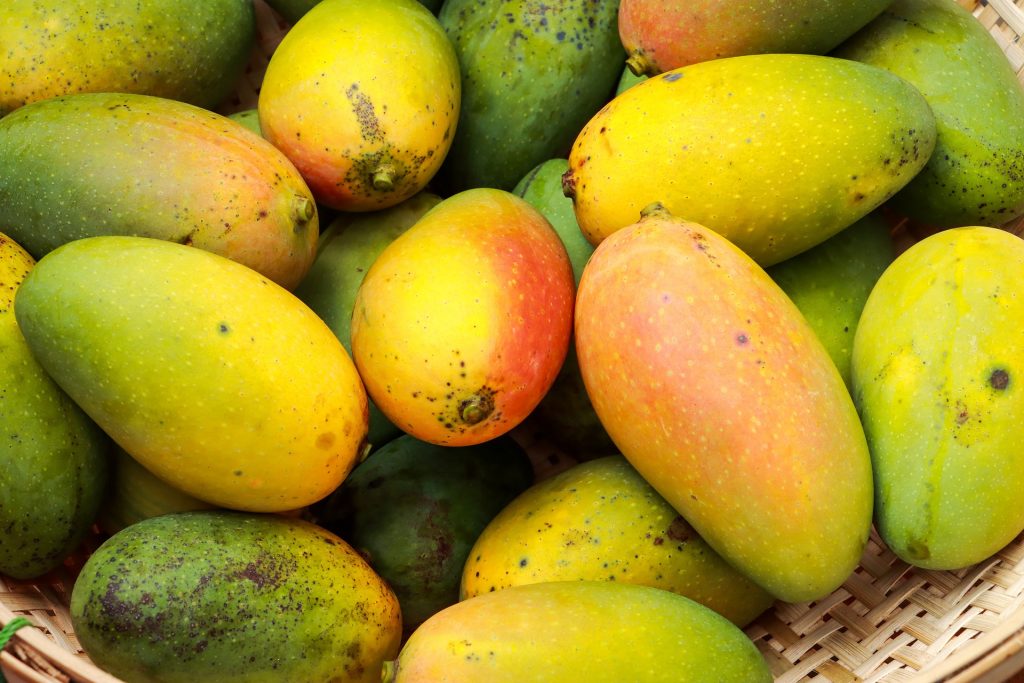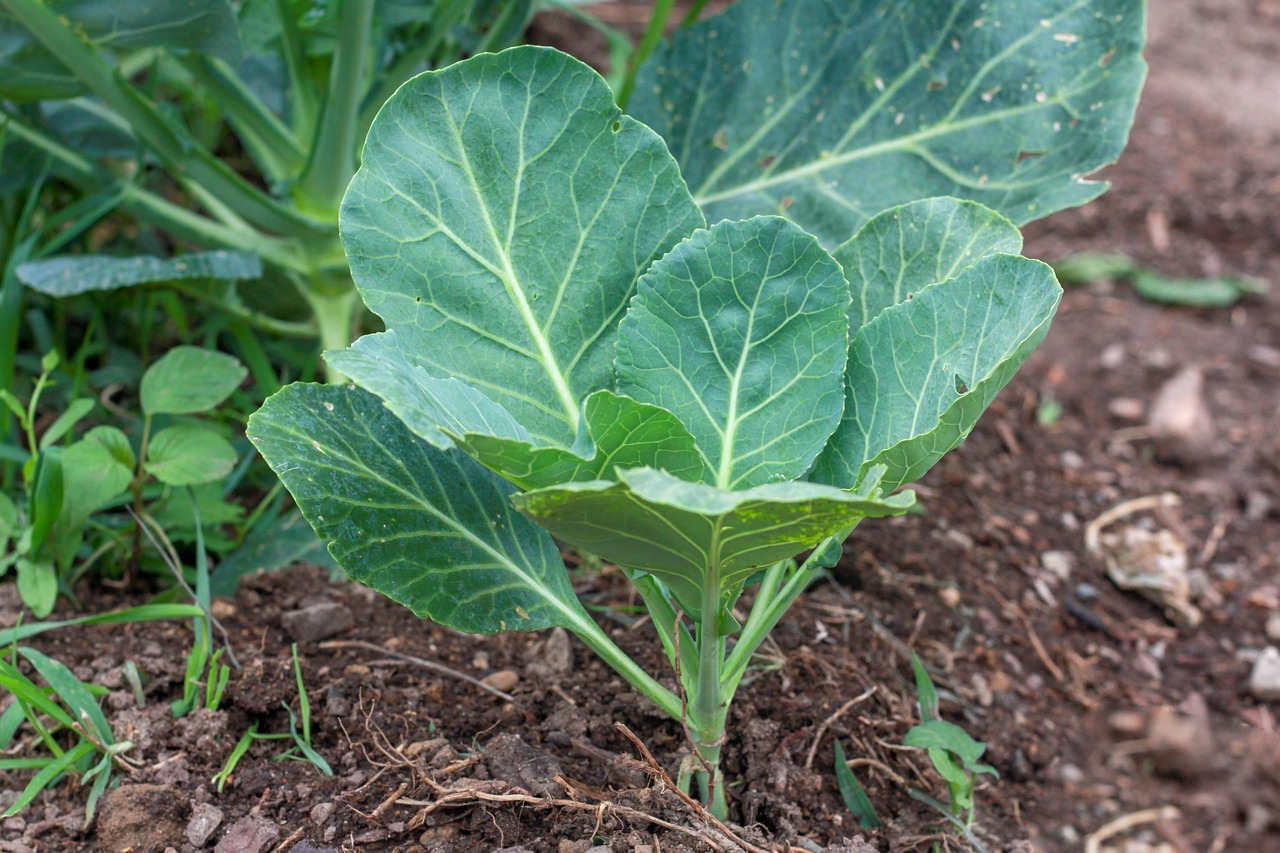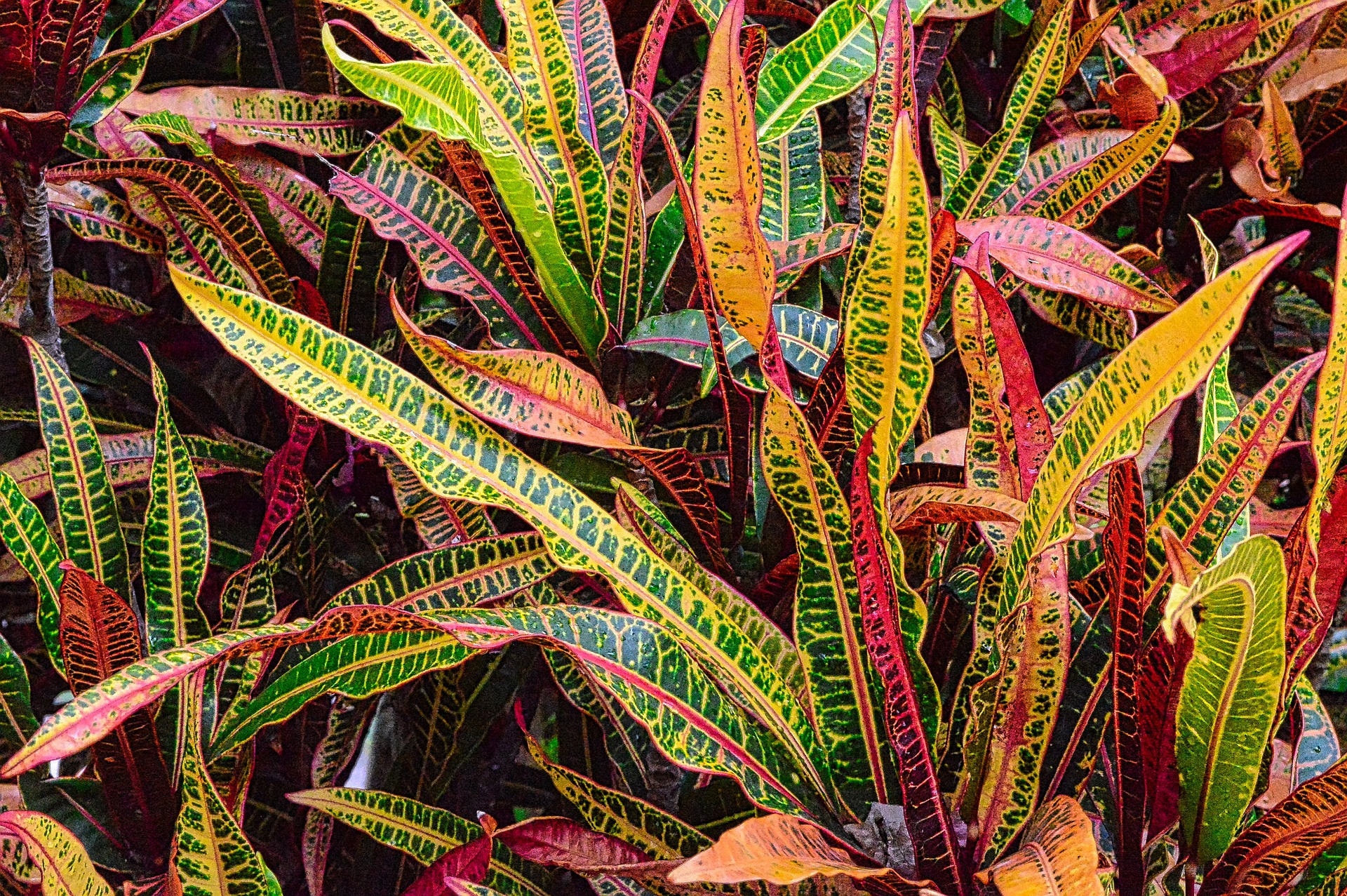Ripe mango fruits create an attractive display on a tree and are delectable because they have a sweet floral scent, with a mix of banana, citrus, peach, pear and pineapple flavors.
Mango is one of the most popular tropical fruits in the world. The tree produces many clusters of fruit which ripen at different intervals therefore providing a large supply. When taken care of, mango trees can live and produce fruits for many years.
If conditions are favorable, planting a mango tree(s) at your home or other landscape helps in conserving the environment, adding beauty and shade to a landscape and providing sweet fresh fruits.
Description
Mango is an evergreen fruit crop belonging to the family Anacardiaceae and native to Central Asia. The tree is adapted to growing in warm tropical and subtropical regions of the world with dry seasons (greater than 3 months) followed by rains.
The tree is mainly grown for its edible fruits which contain almost all known vitamins and many minerals. Fruits are initially green or purple but turn to a yellow/orange/red color when ripe and become soft and fibrous in some varieties. They can be used for juice, fresh fruit, desserts, jam, pickles etc.
Scientific name: Mangifera indica
Common name: Mango
Mature plant size: Up to 30m(100ft.)
Sun requirements: Full sun
Hardiness zones: USDA zones 10b to 11
Fruit color: Yellow, red, green, purple, orange
Native area: Asia
Common mango varieties
Apple: Fruits are medium to large size with an almost round shape. Fruits have less fiber, a small seed compared to flesh and thin cover. The thick flesh is smooth and has good flavor with a melting texture.
Keitt: Fruits are large with a round base and fibreless. Skin color is not appealing, and it is recommended to grow the tree in dry areas.
Van Dyke: Fruits have beaks and develop bright yellow color with a crimson blush when ripe.
Sensation: Fruits develop an attractive color when ripe and are fibreless. They are relatively small and may develop jelly seed when left for long on the tree.
Heidi: Fruits are fibreless and medium to large in size. They develop beautiful skin color that has a mixture of red, purple and yellow when ripe.
Kent: Trees are large and produce big fibreless fruits with a rounded base. Mangoes are considered to be some of the best tasting.
Neldica: Fruits are large, round and elongated with few fibers. They develop an attractive skin color which is a mixture of red, pale red and yellow colors when ripe.
Temperature requirements
Mangoes prefer to grow in regions with temperatures between 240C to 270C. They need warm temperatures to flower and fruit. Mango trees cannot withstand frost in that when temperatures drop below 400F, flowers and small fruits may die.
When to plant mango trees
Mango trees can be planted at any time of the year as long as the area is frost free, but it is best to plant at the beginning of the rainy season.
Site selection
Mango trees should be grown in an area that receives lots of sunlight for proper flowering and fruit development. Mango trees are able to grow in a wide range of soils, from deep fertile soils to shallower less fertile soils and are able to withstand semi-arid conditions.
For optimum growth, choose an area that has deep, fertile, well-drained soil and is sheltered from strong winds.
Planting
Although trees can be grown from seed, it is recommended to plant grafted plants because they start to produce fruits early (2 to 5 years) and have consistent growth and yield patterns compared to trees grown from seed (8-15 years).
Purchase grafted plants from a certified nursery that are in good condition without symptoms of disease or blemishes.
Dig a hole that is deep and wide enough to comfortably accommodate the root ball of the plant.
Remove the plant from its packaging and plant in the hole.
Backfill with soil and water.
Do not put fertilizer in the pit as it may burn sensitive roots.
Apply a layer of mulch under the tree to retain moisture and control weed growth.
Care and maintenance
Watering
Water the tree when it is still young for optimum growth. Also, water when flowering and fruit formation have started. Mature mango trees are able to withstand long periods of drought.
Mulching
Add a layer of mulch under the tree to retain moisture in the soil and reduce weed growth. Rotten organic mulch adds nutrients to the soil. Use dry grass or dried leaves.
Fertilizing
During the early stages of development of the tree (first four years), apply organic manure in form of compost or rotted cow manure. Do the same whenever the tree has started flowering and when fruit production has commenced.
Weeding
The best way to control weeds is to mulch under the plant. Weeds that grow should be dug out or small animals like sheep and goats can be introduced to graze on the weeds, if it’s a sizeable orchard.
Pruning
Pruning is done during the early years of plant growth and also when the tree has matured. When the tree is still young (about 1m above the ground), cap the plant in order to encourage growth of side branches. Thereafter, remove every second flush of leaves. When the tree is mature, prune branches that are at knee level and remove dead branches prior to flowering. Ensure to maintain the height of the tree below 4m to allow easy penetration of light, air and ease harvesting.
Improving fruit formation
Grafted trees start flowering around two years after planting. Pluck off these flowers to prevent fruit formation so that the tree gets established and energy is not spent on fruit formation.
Remove poor quality undersized fruits after onset of fruit formation to allow growth of big sized fruits.
Pegging heavy branches
In some trees, the branches become so heavy with fruit, and it looks like they may fall anytime. Support these branches with a log of wood.
Pest and disease management
Proper management practices are encouraged when it comes to controlling pests and diseases. Ensuring aeration, proper sanitation under the tree and preventing flooding will drive away most problems. However, in case of an infestation, control measures have to be employed.
Common pests attacking mango trees include mango fruit flies, mango seed weevil, aphids, whiteflies, black flies, mealy bugs and scales. Control these by applying appropriate pesticides and insecticides.
Diseases include anthracnose, powdery mildew and leafspot disease. Use appropriate fungicides and other chemical sprays to control them.
Harvesting mango fruits
Mango fruits are ready for harvest when the skin starts to turn from green or purple to yellow/orange/red depending on the variety and the flesh turns yellow. Use big scissors to cut off ready fruits from the tree or use a ladder to reach fruits on tall trees.





